Plug-in Electric Vehicle Charging: The Basics
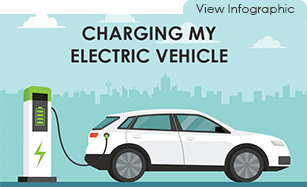
Charging your all-electric vehicle (EV) or plug-in hybrid electric vehicle (PHEV)–together known as plug-in electric vehicles (PEVs)–is similar to charging other electronics. One end of an electrical cord is plugged into your car, and the other end is plugged into a power source or charging equipment.
There are three categories of charging equipment based on how quickly each can recharge a car’s battery. Charging times for PEVs are also affected by:
- How much the battery is depleted
- How much energy the battery can store
- The type of battery
- Temperature
Charger Fast Facts
| Charging Options |
Level 1 (120 Volt) 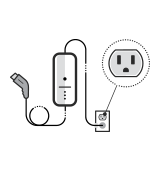
|
Level 2 (240 Volt) 
|
Direct-Current (DC) Fast Charging 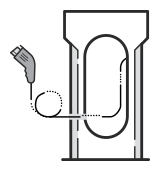
|
| What does the charge port on the vehicle look like? |

|

|
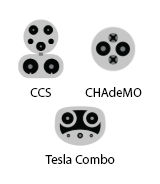
|
|
How fast do they charge? |
About 5 miles per 1 hour of charging* |
About 25 miles per 1 hour of charging* |
~100 – 300+ miles per 30 minutes of charging† |
|
Where can I find them? |
|
|
|
EV charger images are courtesy of Con Edison.
Level 1 uses the same outlet you use for your cell phone and toaster. Worth noting:
- You can plug your car directly into the 120 Volt outlet using the charge cable (technically called the Electric Vehicle Supply Equipment or EVSE) that often comes with the vehicle.
- Many people with commutes less than 40 miles a day find this sufficient to charge their PEV overnight and meet their daily driving needs.‡
Level 2 uses the same 240 Volt outlet you might use in your home for an electric oven or clothes dryer. Worth noting:
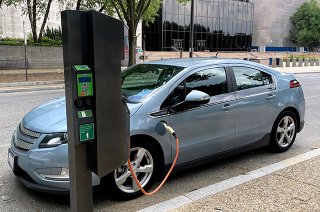
- It allows for faster home charging and can replenish hundreds of miles of range to your vehicle overnight, ensuring a full battery under most circumstances.
- If you do not already have a 240 Volt outlet in an ideal location for charging your vehicle, a qualified electrician can help you install a new outlet and a Level 2 charger. They can determine if your home has sufficient capacity or needs an upgraded electrical panel and will ensure work is done properly.
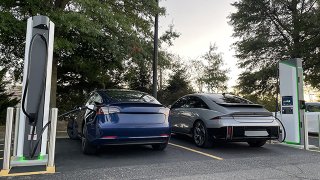
- Depending on your vehicle and the speed of the DC fast charger, many PEVs can regain hundreds of miles of range in as little as 20-30 minutes. However, if you have access to charging at home or at work using level 1 and 2 chargers, and have more time to charge, they will usually be cheaper than DC fast chargers.
- The rate of DC fast charging is higher as the vehicle’s battery is closer to empty and slows down as it gets closer to full. It will generally save you time to only DC fast charge your PEV to around 80% of its battery capacity, and then continue on the road to the next charging station. Unless you need the full range of your battery to reach a destination, DC fast charging beyond 80% tends to be significantly slower and it can sometimes double your time spent charging to reach 100%.
Visit the Department of Energy (DOE) website to learn more about charging equipment.
Interested in seeing how many chargers may be needed in your area? Use DOE’s EV Pro Lite Tool to get an estimate on charging needs in your state or metropolitan area as PEV adoption grows.
Visit EV Charging: The Details for answers to frequently asked questions.
Read the Recommendations of the Federal Electric Vehicle Working Group (pdf) (571 KB, November 2024), which include strategies for EV adoption across the U.S. and a sustainable, accessible, and resilient EV ecosystem.
*Power levels vary among charging equipment; L1 estimate of recharging time assumes 1.9 kW, L2 assumes 6.6 kW.
†Charging time may be shorter depending on station power. More DC fast charging stations that charge cars quickly are being installed around the country.
‡PEVs should ideally charge on a dedicated circuit, or one without another electrical load. Consult with your electrician and the EVSE manual for detailed specifications.
